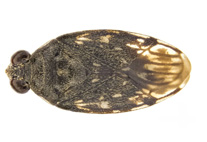Abstract
The larvae and pupae of six species of the Palaearctic genus Sibinia Germar, 1817 are described in detail for the first time. Five of them develop in seeds of Caryophyllaceae and belong to Sibinia (s. str.): S. attalica Gyllenhal, 1835; S. femoralis Germar, 1824; S. tibialis Gyllenhal, 1835; and S. viscariae (Linnaeus, 1760), which are included in the S. femoralis group, and S. sicana Ragusa, 1908, which is included in the S. unicolor Fåhraeus, 1843 group. The sixth species is S. sodalis Germar, 1824, which develops in seeds of Plumbaginaceae and belongs to the subgenus Dichotychius Bedel, 1885. The larvae and pupae of these species are compared with those previously described for some species of the third subgenus, Microtychius Casey, 1910 from the Americas. Some larval characters, but no pupal ones, are useful to support the three subgenera and the two previously mentioned groups of Sibinia s. str., which were previously postulated based on a few adult morphological characters. The immatures of Sibinia are also compared with those of the closely related genus Tychius Germar, 1817, providing some distinctive characters between both genera. New bionomic data on larval and pupal development and adult emergence are reported for all the described species. These data suggest that species in this genus are highly homogeneous in life history traits.

